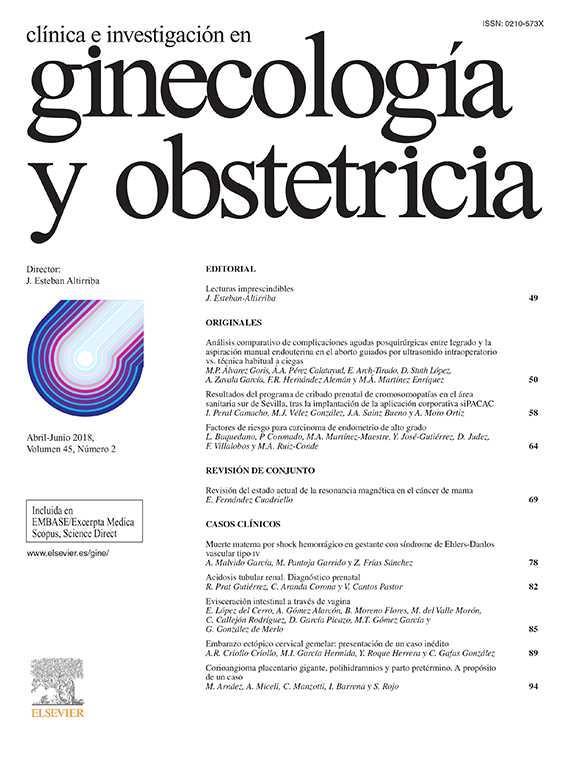Evaluar el valor predictivo del patrónanormal de velocimetría Doppler en el territorio ute-roplacentario realizado después de la semana 26 engestantes de alto riesgo para el desarrollo de complicaciones perinatales relacionadas con el desarrollo dela placenta.
Material y métodoEstudio prospectivo realizadoen 85 embarazos de alto riesgo durante un período de18 meses. Mediante Doppler color se estudió la ondade velocidad de flujo de ambas arterias uterinas y arteria umbilical entre las semanas 26 y 34 de gestación. El estudio Doppler se consideró anormal si elíndice de pulsatilidad para los casos estudiados se encontraba por encima del percentil 95 para la edad gestacional o si existían muescas en una o ambas arteriasuterinas. Se determinó la incidencia de preeclampsia,muerte fetal intraútero, retraso de crecimiento intrauterino, parto prematuro espontáneo (< 34 semanas) uoligoamnios, y la capacidad del Doppler para predecirestas complicaciones.
ResultadosUn total de 42 gestantes presentó unpatrón Doppler uteroplacentario patológico mientrasque los 43 casos restantes presentaron un patrón normal. Treinta y seis de las 42 gestantes con Dopplerpatológico (85,6%) desarrollaron alguna de las complicaciones estudiadas mientras que sólo lo hicieronocho de las 43 gestantes con Doppler normal (18,6%)(p < 0,001).
ConclusiónEl estudio Doppler uteroplacentario secomporta como un fuerte predictor de complicacionesperinatales estudiadas en gestantes de alto riesgo.
To evaluate the predictive value of abnormal Doppler velocimetry trace of the uterine placenta from the 26th week in gestants at high risk of developing perinatal complications related to placental development.
Material and methodA prospective study carried out on 85 high risk pregnancies over a period of 18 months. Using Doppler colour the speed of the flow wave of both uterine arteries and the umbilical artery were studied from weeks 26-34 of the gestation. The Doppler study was considered to be abnormal if the pulsatility index of the vessels studied was found to be below the 95th percentile for the gestational age, or if there were grooves in one or both of the uterine arteries. The incidence of pre-eclampsia, intra-uterine foetal death, intra-uterine growth retardation, spontaneous pre-term labour (< 34 weeks), and oligo-am-nios were determined. Also the Doppler capacity for predicting these complications. Results:42 gestants had a pathological Doppler utero-placentary trace, whilst the remaining 43 had a normal trace. Of the 42 gestants with altered Doppler, 36 (85.6%) developed some of the complications studied, whilst only 8 of the 43 gestants with normal Doppler (18.6%) had any (P < 0.001).
ConclusionUterine-placentary Doppler study is a good predictor of the perinatal complications studied in high risk pregnancy.






